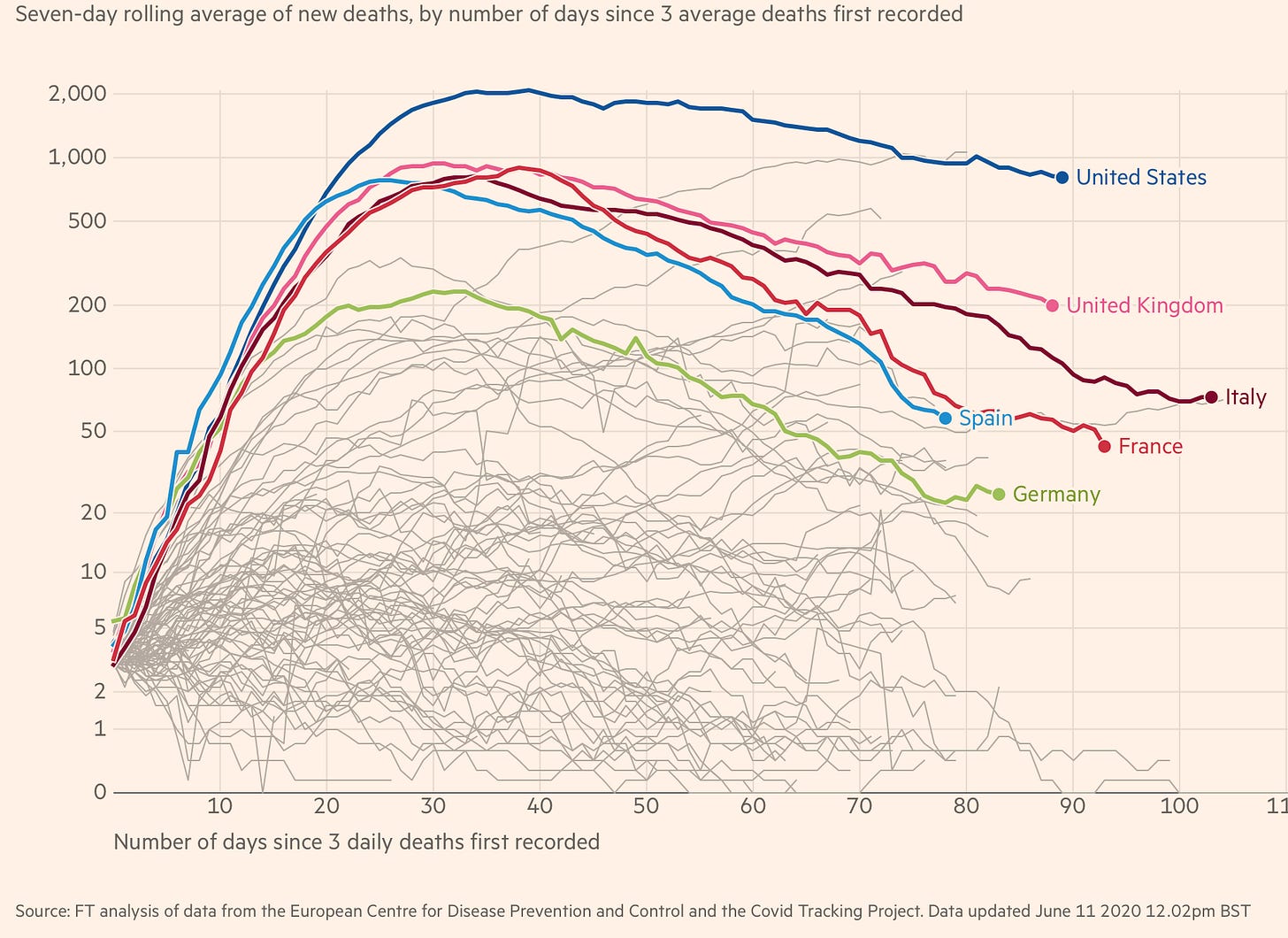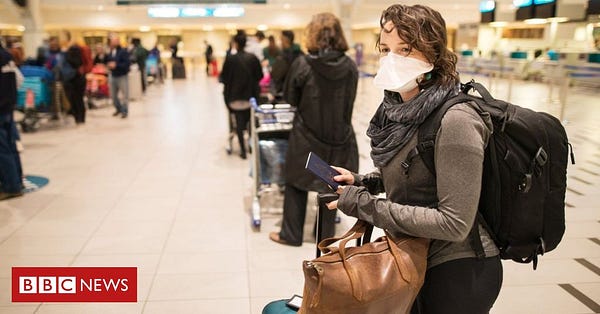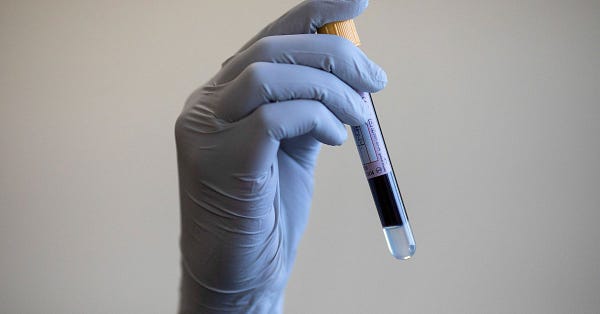🦠 Learning to live with COVID-19
📊 Daily Data Brief: (June 12, 2020, 05:33 GMT) (❗️Previous data: June 10, 2020, 04:50 GMT)
Cumulative case: 7,597,562 (+273,763) cumulative cases
Active cases: 3,331,512 (+25,428) (this is the number of currently infected patients)
Total Deaths: 423,846 (+10,113)
Serious/Critical Cases: 53,916 (-108)
Recovered: 3,842,204 (+238,222)
Source: Worldometers
1) Seven-day rolling average of new deaths (updated daily as ECDC releases). Major update with per country graphs now available (Link) (US, UK, France, Germany, Sweden, Nordic Comparison)

Showing a chart from the FT today highlighting the worrying situation in Brazil, Mexico, India and Russia and Iran (NEW❗️). Also the FT comparative charts now allow up to 6 countries

2) Rt estimate per State (US) and per country (NEW❗️). This is a new resource link in the data section from a team which has led accuracy in modelling fatalities in the US for the past few weeks. (Link)


A great interview of Michael Osterholm on the pandemic, a tweet on a recent paper showing at least 1,300 infections from abroad in the UK epidemic, a video and thread on prevalence of asymptomatic transmission given its importance for public policy and finally a graphic image of the damage to the lung of a 20 year old woman infected with COVID-19 in New York.
The Corona Daily then focuses on vaccine with the anticipated start of large scale Phase 3 trials this summer with at least four vaccine candidates. I then look at what we know of ‘correlates of protection’ towards SARS-CoV-2 with a great review and video in STAT news, and an article in The Conversation focusing on T-Cell mediated immunity. Two groups discover a new pathways which could both explain the increased vitality of SARS-CoV-2 versus SARS-CoV but also open a new therapeutic pathway.
Turning to the policy side, a great interview looking at the Japan model and its cultural underpinning. Finally, looking at initial governors’ reaction as case numbers and hospitalisations spike in the wake of their respective states reopening.
🦠 Article of the day: Dan Buettner writes “COVID-19: Straight Answers from Top Epidemiologist Who Predicted the Pandemic”, an interview of Michael Osterholm (Director of the Center for Infectious Disease Research and Policy). (Link)
Early on, Buettner is quick to highlight that Osterholm has worked for both Democrats and Republicans, and is more likely to be apolitical in his analysis of COVID-19. Unfortunately his perception is a sobering one.
Osterholm talks about the real challenge of providing neutral risk-assessment for patients on physical distancing:
“Again, if they’re at increased risk for severe disease, I have to tell them that they are taking this risk on. This has been a very difficult part of this pandemic to try to provide meaningful and thoughtful risk-based information that doesn’t scare people needlessly, but at the same time, doesn’t put them in harm’s way for what can happen.”
While Osterholm believes that “the darkest days are ahead of us”, he is reasonably optimistic about getting to a vaccine. In the interim, he advocates for people to meet in outside settings with appropriate physical distance to keep their important social ties.
When asked what he would do if he was the U.S. COVID-19 czar, Osterholm rightly tackles the dissemination of information to the public as being an important component:
“We really need to have as much information in the hands of the public. We can’t answer all the tough questions. We can’t solve all the tough problems, but we can be a partner in helping the public understand what we know and what we don’t know. I call it straight talk. Not happy talk, just straight talk. If I were czar, I would make sure that all the people that I worked with would espouse that very important goal.”
A great level-headed assessment of where we are and what possible directions we could travel to including the most likely of learning how to live with COVID-19 for the foreseeable future.
🇬🇧 Tweet of the day: Jeremy Farrar (Director of the Wellcome Trust) tweets a BBC article “Coronavirus came to the UK ‘at least 1,300 times” and the paper by Oliver Pybus et al. “Preliminary analysis of SARS-CoV-2 importation & establishment of UK transmission lineages” it is reporting on. Interesting study with public policy implication on effectiveness of border closing and travel restriction in containing a pandemic.


🦠 Video and Thread of the day: “Up to 45 percent of SARS-CoV-2 infections may be asymptomatic”. A short video from Eric Topol and Daniel Oran following the publication of their paper in the Annals of Internal Medicine: “Prevalence of Asymptomatic SARS-CoV-2 Infection: A Narrative Review”.
The paper has been criticised by Muge Cevik et al. who wrote “An open letter to Oran and Topol, and the Annals of Internal Medicine” and a Twitter Thread.
The open letter questions 3 areas of the paper: the lack of clear definition of asymptomatic and pre-symptomatic patients, the selective inclusion of longitudinal studies in the paper, and finally some of the interpretation about the spread potential of asymptomatic patient. Cevik et al. also opine that there was a better systematic review (although not peer-reviewed and still in pre-print) asking and attempting to answer the same questions as the Topol and Oran narrative review.
It appears however that all three publications agree that more data is needed to elucidate an area of research of great importance to designing adequate control measures for public policy.
An article published in the Time “Nearly Half of Coronavirus Spread May Be Traced to People Without Any Symptoms” which reported on the Oran and Topol paper, and extensively quoted the latter was probably moreat the origin of the open letter by Cevik et al. :


The language in the Time article (including its title) is less nuanced than the paper, and it might be what really prompted the open-letter. It is the second time this week (including the World Health Organisation controversy reported in the previous edition of the Corona Daily) that the prevalence of asymptomatic and pre-symptomatic COVID-19 individuals is in the media. It highlights both its importance and the current lack of data in this area. In the Time article, Topol argued for universal masking given the uncertainty using the precaution principle. He also suggested that given the limited testing ability, we should use data from wearables (an area of great interest to him and in which he has also deep expertise):
“He and his team are studying changes in heart rate that could be captured on smartwatch apps and fitness bands and might signal possible infection. Such changes may not be useful on an individual level, since heart rate changes can be attributable to a number of different factors including stress and heart disease. However, if, for example, resting heart rate levels for a specific community rise and remain high for a period of time, that could indicate a possible COVID-19 cluster and flag individuals and their doctors to increase testing and follow up care in the community.”
There is a quote in the video (as well as the narrative review of Topol and Oran which is important in relation to SARS-CoV-2 and caught my attention:
“Two series of lung CT scans have shown the classic brown glass opacities which are distinctive for COVID-19 in asymptomatic individuals so the absence of symptoms might not guarantee the absence of harm.”
There is also a lack of data on this. It continues to highlight the potential long term side effects of COVID-19, including amongst ‘mild’ patients. This was covered in the article of the day on a previous edition of the Corona Daily: “Caring for the long Haul”.
🦠 Image of the day: Lung damage of a young woman “in her 20s” ongoing lung transplant following COVID-19 infection taken from a New York Times article: “Covid-19 Patient Gets Double Lung Transplant, Offering Hope for Others”. A graphic reminder, if needed, of the harm done by SARS-CoV-2 on patients’ organs.


💉 Peter Loftus “Coronavirus Vaccine Candidates’ Pivotal U.S. Testing to Start This Summer” in the Wall Street Journal. (Link)
As Moderna and other leading candidates in the ‘race’ for a vaccine had announced, the plan is for large scale Phase 3 trials to start this summer potentially ahead of a second wave.
Now, John Mascola, director of the vaccine research center at the National Institute of Allergy and Infectious Diseases, has confirmed it to Peter Loftus. Apart from Moderna , the other three pharmaceutical companies to start such large scale trials in this timeframe are: Johnson&Johnson, Astra Zeneca and Pfizer.
Dr. Corey who leads a existing network of researchers in HIV vaccine studies is also quoted in the article:
“Each vaccine study is expected to include roughly 30,000 people, some receiving the experimental shots and others placebo shots, though the final number of participants could vary, Dr. Mascola said. Each study will be conducted at more than 50 sites, primarily in the U.S. but possibly including other countries, Dr. Corey said.”
It is likely that Merck and Sanofi vaccine candidates could also follow a similar path shortly thereafter.
The expectation is for these trials to yield result within 6 to 8 months of starting, with the possibility to increase the scale of the study or granting Emergency Use Approval license in the interim depending on the quality of the initial results.
It is becoming increasingly clear, that whilst this is positive news, having a vaccine within 12-18 months does not mean having one for 8 billion people. It is also likely that initial use approval for these vaccine might initially be to reduce the risk of contracting the virus and of getting critically sick rather than providing lasting immunity.
💉 Andrew Joseph writes “Immunity to the coronavirus remains a mystery. Scientists are trying to crack the case”. Joseph writes a very comprehensive explainer on where we stand in terms of COVID-19 immunity, including also a video to “Learn more about antibodies, immunity, and what they mean for Covid-19”.
Joseph expands on the concept of ‘correlates of protection’ and how we are still at the beginning in understanding what part of our immune system is involved and how long the immunity one is initially conferred lasts. Immunity is an interplay between different proteins and cells, some of which are lengthy to elucidate.
On this point, there is a recent article on the T cells involvement in COVID-19 immunity written in The Conversation well worth a read in complement to the STAT one: “Coronavirus: how T cells are involved and what it might mean for vaccine development”
Although it is preferable to know more about the ‘correlates of protection’ to SARS-CoV-2 in vaccine development, it is not a pre-requisite. As Joseph writes:
“We don’t formally need to know” the correlates of protection, said John Mascola, the director of the National Institutes of Health’s Vaccine Research Center. “One can make the vaccine somewhat empirically, which means make it and test it, and in the old days that’s how all the vaccines were made.”
There is also another distinction with regards to the degree of protection of a vaccine:
“Because of the difficulties of stopping upper respiratory infections, scientists are already anticipating that Covid-19 vaccines may not provide complete protection — called sterilizing immunity — but will rather reduce the risk of contracting the virus and of getting critically sick.”
This would include potentially not preventing long term damages to lung cells for example. Two great reads. (Link)
🦠 Looking at a recently reported infection pathway specific to SARS-CoV-2, two research groups have published a pre-print on the involvement of Neuropilin-1 (NRP-1) in mediating cell entry of SARS-CoV-2. Although both are pre-prints the fact that two groups have independently reported on it, gives more confidence about the involvement of NRP-1.
James L Daly et al. publish “Neuropilin-1 is a host factor for SARS-CoV-2 infection” in BioRxiv (Link)
Ludovico Cantuti-Castelvetri et al. publish “Neuropilin-1 facilitates SARS-CoV-2 cell entry and provides a possible pathway into the central nervous system” in BioRxiv (Link)
These findings, once peer-reviewed, could explain the increased virality of SARS-CoV-2 relative to SARS-CoV, and potentially open up a new therapeutic pathway.
🇯🇵 Oshitani Hitoshi (Professor of Virology, Tohoku University) writes “Infectious Disease Response — to see the forest, not just the trees: What differentiated Japan from the Western countries?”. A great Q&A looking in greater depth at the Japan response and approval to COVID-19 and comparing it to the approach in the West. (Link)
🇺🇸 Alice Miranda Ollstein and Dan Goldberg write “Quarantine fatigue: Governors reject new lockdowns as virus cases spike” in Politico. The authors quote a number of governors whose state have re-opened, some of whom dismiss re-opening as being the cause, while others claim that they are better prepared to deal with new surge and others claiming that re-opening was the only viable long term strategy. In short no appetite for a second lockdown. Future will tell. (Link)
📊 A picture is worth a thousand words: Global (🌎) and local (with relevant flag) visualisation and forecasting tool
💉 (
❗️NEW) “Coronavirus Vaccine Tracker” by Jonathan Corum and Carl Zimmer from the New York Times.“The status of all the vaccines that have reached trials in humans, along with a selection of promising vaccines still being tested in cells or animals.”
(Link)
🇺🇸 “The COVID Racial Data Tracker”
“The COVID Racial Data Tracker is a collaboration between the COVID Tracking Project and the Antiracist Research & Policy Center. Together, we're gathering the most complete race and ethnicity data on COVID-19 in the United States.”
(Link)



